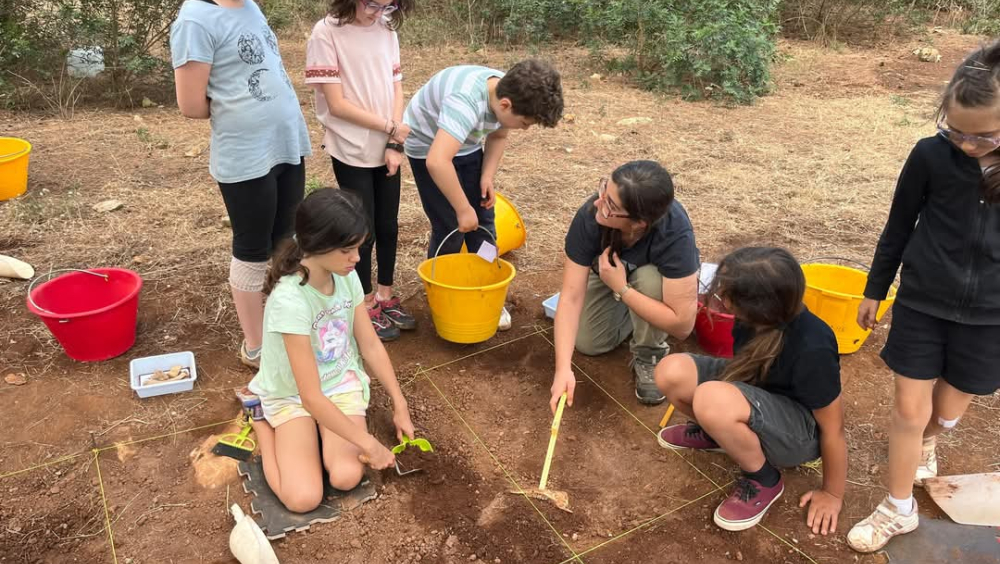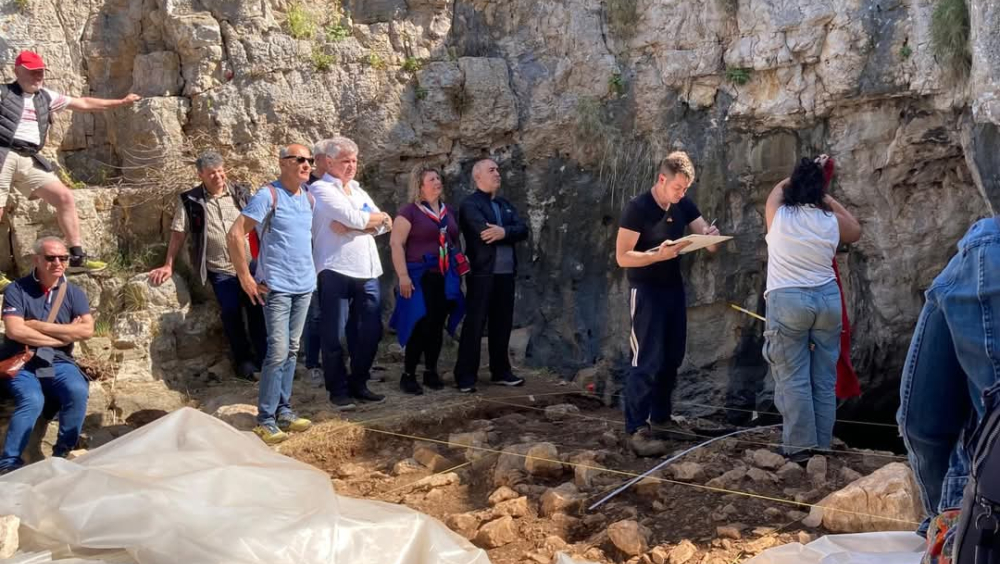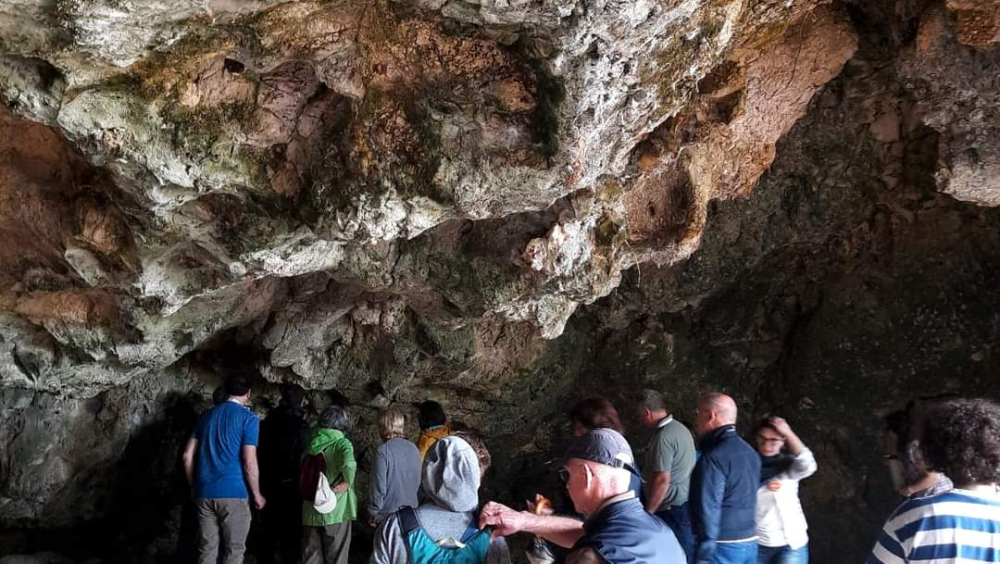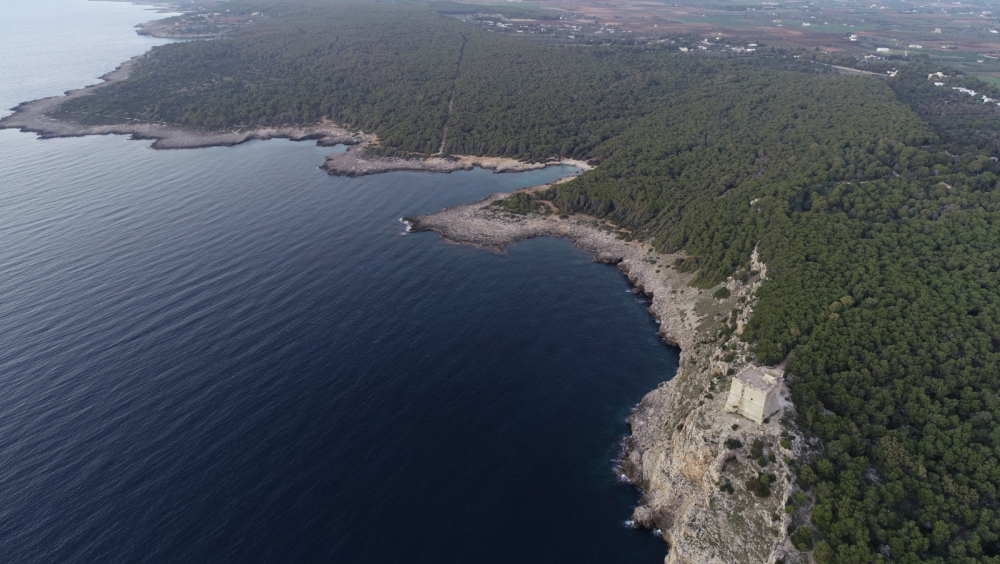Stone stories
Starting from the beginning of the ’60s, archaeological research in the Natural Regional Park “Porto Selvaggio-Palude del Capitano” became an annual appointment and contributed significantly to the discovery of an archaeological site system dating back to the Superior Pleistocene, during which Homo neanderthalensis and Homo sapiens came in succession in the Region. These findings were found in nine caves and include the most ancient remains of Homo sapiens in Italy, with traces from around 40.000 years ago.
During the next years, more exceptional discoveries enriched the archaeological context. During ‘70s, Sorbini started the research in the Mesozoic quarries in the Park, finding important marine fossils dating back to Cretaceous. During ‘90s, excavations lead by prof. Elettra Ingravallo brought to light a Neolithic site (VI-V millennium B.C.) and an important settlement from Bronze age was identified in Torre dell’Alto site, nowadays excavated by University of Bologna.
The Park of Porto Selvaggio emerges as a crossroads of ancient populations, with different cultures that overlapped in the course of time, leaving durable traces. Every new excavation revealed ancient worlds, and now Punta dell’Aspide, Li Schiavoni and Frascone sites continue to tell the history of this land, that preserve the memory of the people that inhabited it during the millennia.
It was the summer of 1960 when prof. Arturo Palma di Cesnola, one of the most famous archaeologists of the last century, arrived in the heart of Salento. His mission was ambitious and exciting: examinate numerous archaeological and palaeontological findings that were discovered in different places in the province of Lecce. Salento, with its coast and its “serre”, was an area full of legends and mysteries connected to the “Taranta”, but also the place of an ancient history that had still to be told.
During the previous decades, the first excavations led in Romanelli Cave (Castro) had revealed traces of Palaeolithic frequentations in the Region. But what archaeologists were about to discover surpassed all the expectations. Prof. Palma di Cesnola, followed by his colleague Edoardo Borzatti, focused on the coast of Nardò, where reports of extraordinary discoveries had sparked his interest.
His investigations led to a discovery that changed the perception of the past of this land. During the survey in a still little explored cave of Uluzzo Bay, in the Park of Porto Selvaggio, the professor and his team discovered fossil bones and stone artifacts dating back to the Paleolithic, an era whose history was not thought to be reconstructed in such detail in this part of the Mediterranean Sea.
During the same research campaign, Paleolithic deposits were identified in seven other caves! Thus the landscape of Nardò, made of centuries-old olive trees and rocks bathed by the sea, revealed itself to be a place belonging to a very ancient time. Among the rocks, remains of now extinct animals, traces of hearths and strange stone tools had been deposited, telling of ways of life now forgotten, a humanity from a much older era than those known until then in Salento…
The weeks dedicated to archaeological research became an annual event, and soon, local youths joined in, forming later, in 1972, the Gruppo Speleologico Neretino. During each campaign, new traces of a deep and unknown past emerged. With every sod lifted, a story of men and women who had lived in a completely different dimension from ours took shape: we were facing remains from the Upper Pleistocene, a period during which, Homo neanderthalensis and later Homo sapiens, alternated for thousands of years in the caves of this coast. Both were hunter-gatherers who moved across the lands of this region. In fact, five out of the nine sites revealed the oldest evidence of Homo sapiens in Italy, and some of the oldest in all of Europe, dating back about 40,000 years.
In the following decades, other exceptional discoveries came to light. In the 1970s, a series of research projects were started by Sorbini in the Mesozoic limestone quarries near Portoselvaggio, uncovering ancient traces of fauna dating back to the Cretaceous period. In the 1990s, Serra Cicora promontory, located in the central part of the Park, became the focus of excavations led by Professor Elettra Ingravallo (University of Salento), revealing a Neolithic site dating back to the 6th and 5th millennia BC. The discovery of a Bronze Age site at Torre dell'Alto marked another significant milestone in the journey of knowledge.
It was as this coast of Salento had always been a continuous crossroads for ancient populations, a place where different ways of life overlapped, leaving deep traces of men and women who had crossed the millennia. Each new excavation opened doors to ancient worlds. More recently, the sites of Punta dell'Aspide, Li Schiavoni, and Frascone are continuing to tell the history of this land, which holds the memory of all those who lived here.
The impact at European level will be a greater knowledge of the cultural value of the Salento area for the reconstruction of the evolution of human beings in Europe and the development of social well-being deriving from the enjoyment of the heritage and the participation in the processes of knowledge implementation.



